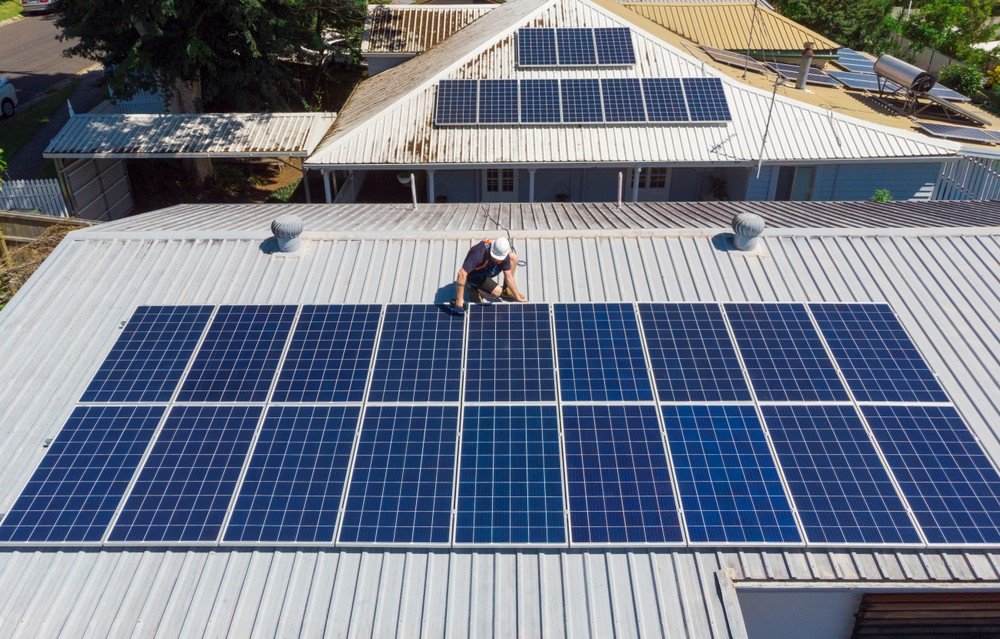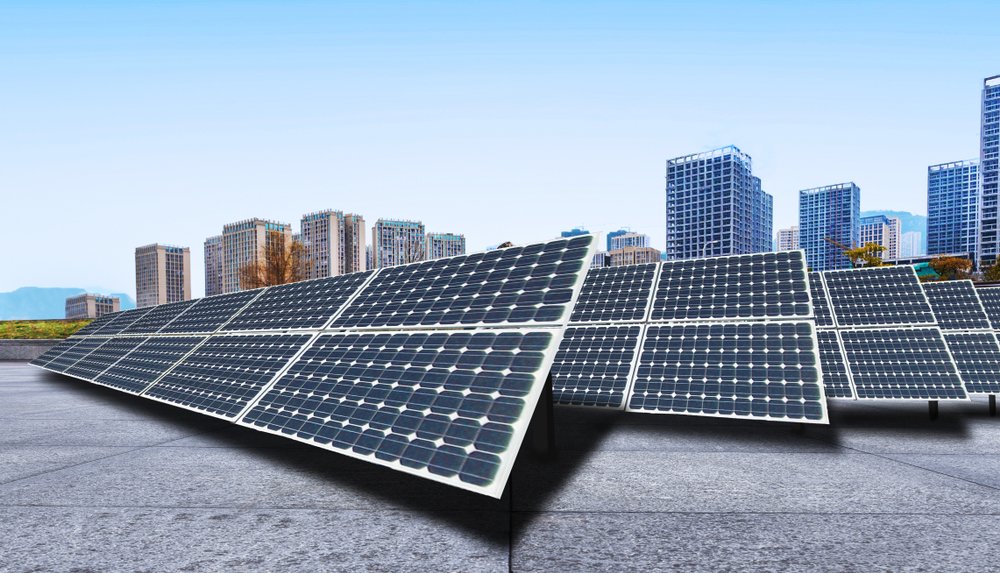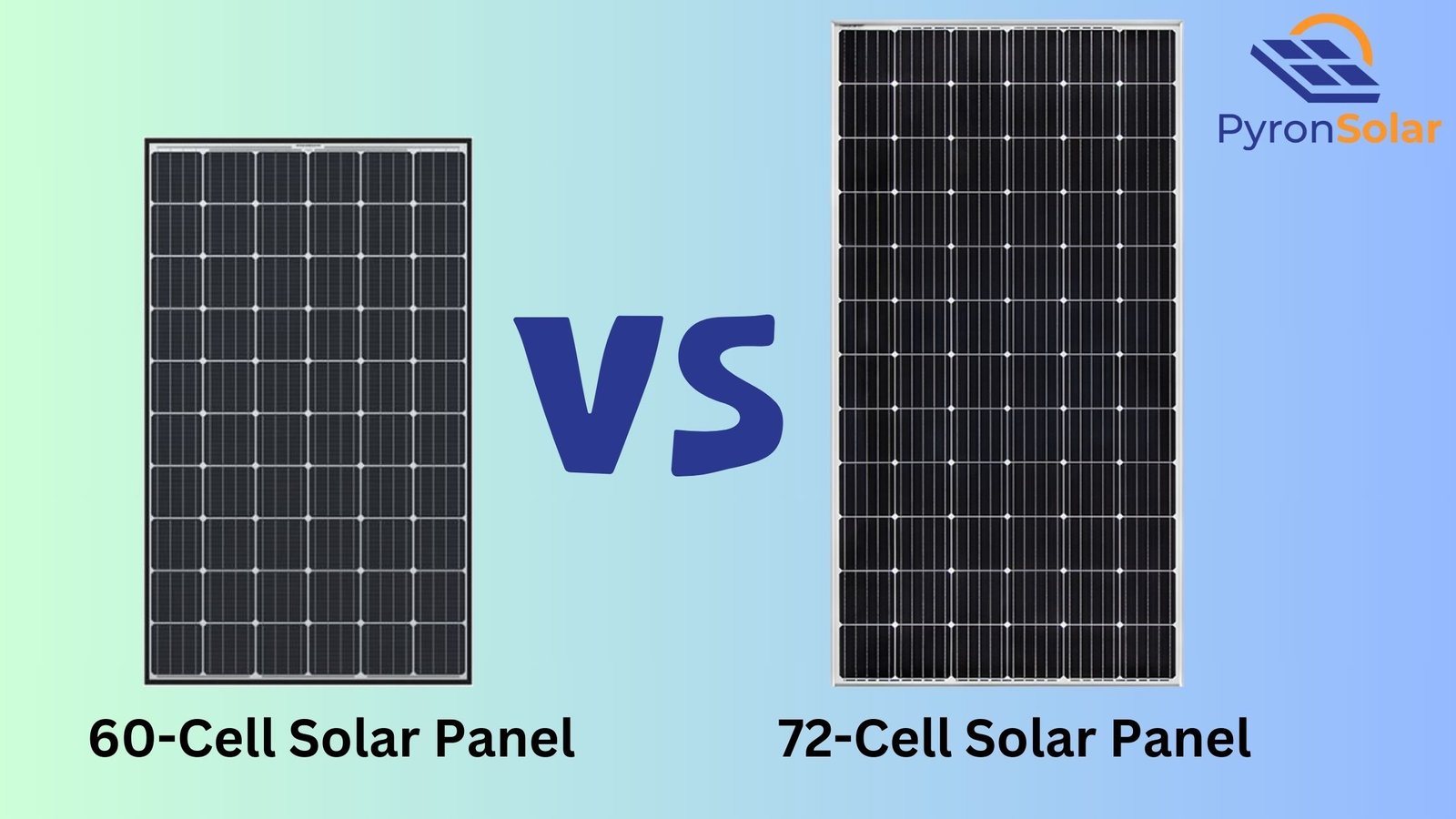Photovoltaic (PV) cells or Solar cells are the main building blocks of solar panels, developed from semiconductor materials that convert sunlight into electrical energy using the photovoltaic effect. Always, the process starts with the sun’s rays hitting the solar cell and exciting electrons, which creates an electrical charge. Each cell is capable of generating a minimal voltage, hence a panel comprising many cells can easily generate a very large amount of power.
Solar panel cells are very important in solar energy production because they are the catalysts required for converting the sun’s energy into renewable electrical energy. Also, these solar panel cells influence the amount of electricity that can be generated. In simple words, the more the number of cells in a panel, the greater the power-generating capabilities. Hence, Solar panels comprise multiple cells connected to maximize their electric power output and efficiency.
The two standard sizes for solar cells in solar panels are 60-cell and 72-cell structured configurations that are commonly used to achieve the best performance and compatibility under varying installation requirements. The 60-cell solar panels are most commonly used in residential installation due to their size, power, and compatibility with ease of installation even in a limited space. Whereas, 72-cell solar panels are often used in commercial businesses or large-scale industrial solar projects where space is not a constraint because they are larger and also capable of generating more energy.
Let us further explore the differences between 60-cell and 72-cell solar panels, including their applications, dimensions, power output, cost, installation, maintenance, and other factors to consider while choosing the right panel according to your needs. Also, you need to be equipped with important information regarding the warranties and the possibility of mixing different types of panels, as well as get to know about the 120-cell and 144-cell solar panels.
What Are 60-Cell Solar Panels?

The dimensions of the majority of 60-cell panels are around 39 inches (0.99 metres) x 66 inches (1.68 metres). Their power output ratings are between 350 and 400 watts, whereas their efficiency ratings range between 17% and 19%.
60-cell panels are developed to achieve the best efficiency within limited spaces, such as residential rooftops. Due to their small and compact size, the installation becomes more flexible and is less prone to damage. Also, it makes it possible for homeowners to increase the number of panels installed in a limited area.
What Are 72-Cell Solar Panels?

The dimensions of 72-cell solar panels are 39 inches (0.99 metres) by 77 inches (1.96 metres). Also, they are capable of delivering higher power outputs, on average varying from 415 to 450 watts, with efficiency ratings of 18% to 21%. Hence, these panels are especially well-suited for large-scale installations because of their ability to produce a greater amount of energy per panel and the saving cost on installation materials.
Their larger size and higher wattage output make 72-cell panels ideal for commercial installations where space is ample, and energy requirements are higher. They allow for more.
Due to their large size and high power output, these 72-cell panels are excellent for large-scale installations and many commercial projects. However, they don’t demand excess space, and in fact, they require much less racking material, a lesser number of electrical connections, and significantly fewer amount of security clamps than compared to the 60-cell panels. Hence, they efficiently use space in large-scale solar farms or commercial rooftops along with cost savings.
Cost Difference Between 60-Cell Solar Panels and 72-Cell Solar Panels
The difference in cost per watt for both 60-cell and 72-cell panels is mostly similar, however, the overall cost will vary based on the installation size. Mainly, the large 72-cell panels will be more expensive because manufacturing requires more amount of materials, but sometimes they do come at a cheaper cost per watt in larger installations.
72-cell panels tend to be more cost-effective for large-scale installations due to economies of scale, while 60-cell panels are generally more affordable for residential installations.
Concerning residential installations, 60-cell panels frequently deliver more value because of their ability to fit in tighter spaces and cheaper installation costs. Whereas, the 72-cell panels in contrast lend more value only under the commercial applications, because of their bigger size and superior power output which leads to much higher efficiency and cost savings.
When deciding on the type of panel to use, it is very important to ensure factors such as — initial installation costs, the possibility of savings, and return on investment (ROI) over time. However, 72-cell panels will have a higher upfront cost but ultimately lead to bigger savings in large-scale projects. Whereas residential installations are considered, 60-cell panels will result in a much faster ROI, mainly due to their reduced initial cost and sufficiently high power output for standard home energy needs. You can learn about why solar panels are expensive. It will give a better idea of the average cost of solar panels right now in the market.
60 Cell vs 72 Cell Solar Panels: Installation and Maintenance
60-cell panels are much easier and less time-consuming to install in residential spaces because of their compact size. However, the maintenance is the same for both types of panels, even though the 72-cell panels’ bigger size might make them considerably more difficult to handle and maintain. Especially in large-scale installations, the extremely large number of panels increases the complexity.
What should you choose between 60 Cell Solar Panels and 72 Cell Solar Panels?
If you are selecting the best panel configuration then you must consider a few factors that completely depend on the particular installation requirements including — space, budget, energy requirements, and your geographic location.
Hence, these factors greatly influence the efficiency and productiveness of the solar installation. Homeowners have to consider their roof size, the amount of energy generation they require, and the panel’s cost-effectiveness options.
Also, here are a few other factors that should be considered:
- Energy Needs
- Panel Efficiency
- Panel Wattage
- Panel Size
- Cost
- Brand Reputation
- Solar Panel Quality
- Temperature Coefficient
- Durability
- Types of Solar Cells Used
How do the warranties compare between 60-cell and 72-cell solar panels?
Warranties between 60-cell and 72-cell solar panels don’t make any difference, as solar panels generally are dependent on the manufacturer rather than the cell count.
However, when you are selecting a panel, you need to double-check the exact warranty details for the panels as it comprises both — product quality assurance and performance guarantee.
Usually in most of the panels, the standard warranty issue is around 12 years. Although there are a few brands that provide up to 25 years of warranty. There is a lot more to know about solar panel warranty.
Can You Mix and Match 60-cell and 72-cell Solar Panels?
NO! It is not recommended to mix 60-cell and 72-cell solar panels in a single installation because of their mismatched characteristic differences in voltage and power output.
Mix and Match of 60-cell and 72-cell solar panels can negatively impact the performance, create unwanted complications to the system design and decrease the operational efficiency.
So, always remember to use panels of the same type, as it maintains good compatibility and smooth functioning.
Drawbacks of mixing both, 60-cell and 72-cell solar panels include:
- Incompatibility with inverters
- Complex installation process
- Reduces efficiency
- Complicates system design
- Increases costs
- Decreases performance
What are 120-cell and 144-cell Solar Panels?
120-cell and 144-cell solar panels are extremely large panels, designed to achieve very high power output. They are equipped using “half-cut” cells, which are traditional cells cut into half to obtain increased performance and reduced losses, especially used in commercial and utility-scale solar installations.
Half-cut solar panels are a technology made by cutting standard traditional solar cells in half, reducing electrical resistance. Also, it ultimately leads to far superior performance, particularly in dim and shaded lighting conditions. However, this unique design also helps to enhance durability and reduce the occurrence of micro-cracks.
These panels are gaining immense popularity because of their improved efficiency, power output, and performance, specifically in partial sunlight conditions. Also, they are capable of delivering better durability and are less impacted by extremely high temperatures, increasing their maximum energy output and lifespan. Therefore, it ultimately leads to a reduction in costs per watt and a more efficient use of space in large solar projects.
Ray is an avid reader and writer with over 25 years of experience serving various domestic and multinational private and public energy companies in the USA.

